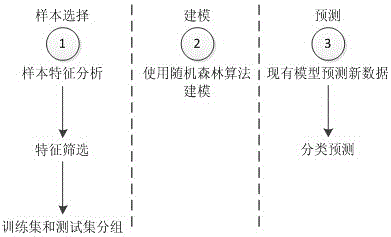Kawasaki disease classification and prediction method based on medical data modeling
A technology of classification prediction and medical data, applied in the field of medical prediction, can solve problems such as ineffective use of nonlinear factors, reduce misdiagnosis rate, and improve the effect of treatment process
- Summary
- Abstract
- Description
- Claims
- Application Information
AI Technical Summary
Problems solved by technology
Method used
Image
Examples
Embodiment 1
[0052] In order to verify the effectiveness of the Kawasaki disease classification and prediction method based on medical data modeling of the present invention, this embodiment selects 918 patient data in the electronic medical records from November 2005 to June 2013.
[0053] 1. Data processing:
[0054] According to the present invention, the data set has the form: each row represents information of a patient, and each column represents one aspect of information, such as ID, physical examination information, Kawasaki disease category, etc., and the format of the data set is as Table 1. The original data set contains 918 patient data, 19 features, 36 duplicate data records were removed from the data set, and finally 882 patient data remained.
[0055] Through data sample selection and feature screening, the final generated data set contains 882 rows and 19 columns of features, as shown in Table 1.
[0056]
[0057] Table 1
[0058] 2. Optimal model parameters
[0059] ...
PUM
 Login to View More
Login to View More Abstract
Description
Claims
Application Information
 Login to View More
Login to View More - R&D
- Intellectual Property
- Life Sciences
- Materials
- Tech Scout
- Unparalleled Data Quality
- Higher Quality Content
- 60% Fewer Hallucinations
Browse by: Latest US Patents, China's latest patents, Technical Efficacy Thesaurus, Application Domain, Technology Topic, Popular Technical Reports.
© 2025 PatSnap. All rights reserved.Legal|Privacy policy|Modern Slavery Act Transparency Statement|Sitemap|About US| Contact US: help@patsnap.com



